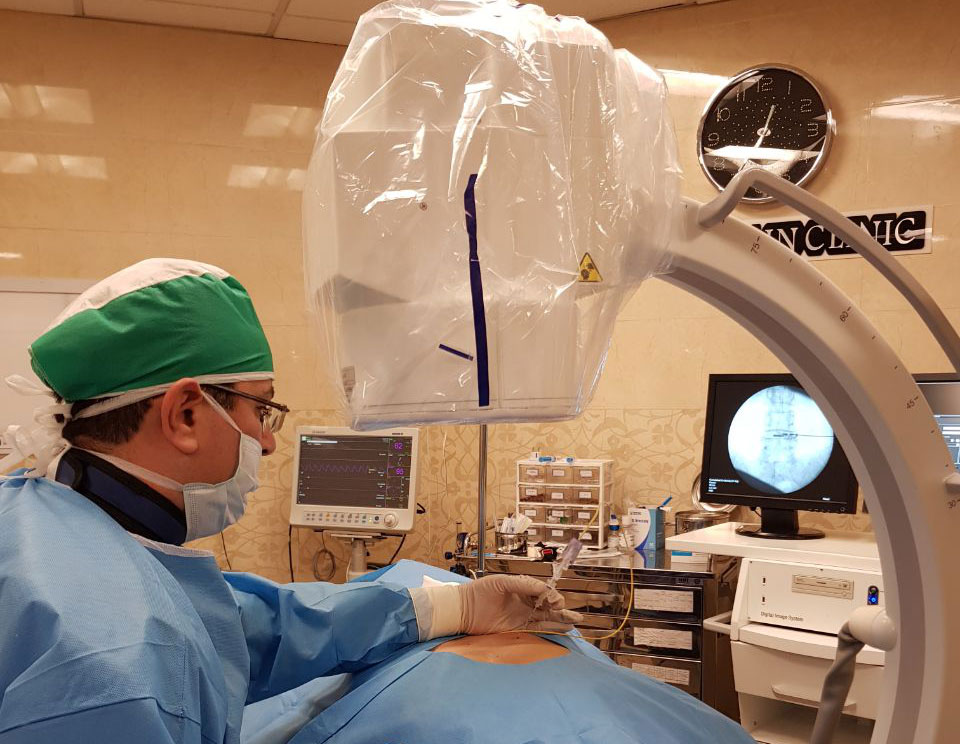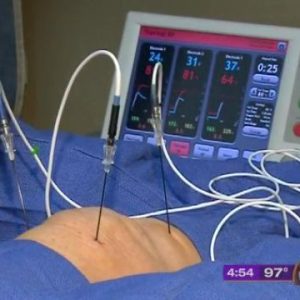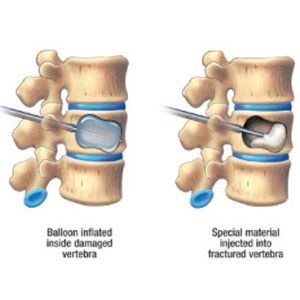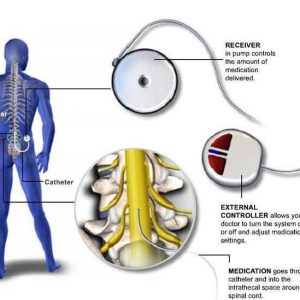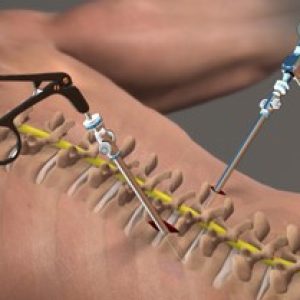In open disc surgery, a large incision is made to access the area of the disc disc herniation, which results in postoperative adhesion and facet joints osteoarthritis , which is associated with pain and disability for many years.Technological advances have led to the invention of intradiscal methods, as the name implies, surgical changes within the disk space (disk nucleus) occur. Technological advances have made it possible to treat the lumbar and cervical disc in an intradiscal closed procedure.
Closed spine surgery (MISS) does not involve a long incision and does not cause significant damage to the muscles adjacent to the spine. Therefore, it will cause less pain and faster recovery. In intradiscal procedures, special needles (Chiba) with the guidance of a radiologic device (fluoroscope) are taken live of the needle’s motion. Needle movement is a harmless path that does not result in organ damage. The needle eventually enters the center and core of the disk and then, through the needle, causes changes in the disk core and reduces the internal pressure of the disk, ultimately leading to reversal of the protruding disk area.
Because these processes and processes take place inside the disk, they are called intra-disk methods (Inside the disk). Changes in the disk nucleus are either chemically due to the reaction with the disk nucleus material (Chemonucleolysis), which involves ozone, discogel, or in the form of thermal effects involving intra-disk laser or RF . The choice of each of these modalities is highly specialized and depends on the patient’s condition and the physician’s plan.
تیترهای مهم این مقاله
Chemical nucleolysis:
The effect of ozone on the lumbar disc:
Ozone is a modified oxygen species (O3) Ozone has a devastating effect on a substance called proteoglycan, the main constituent of the nucleus disc (nucleus pulposus), the nucleus pulposus is a gelatinous substance present in the middle of the spinal discs. Occasionally, the nucleus pulposus ejects from the disk, pressing on nearby nerves and exacerbating spinal nerve pain.
The oxygen gas mixture is injected with ozone into the disks. The gas is injected directly with the needle into the disc, reducing internal volume and pressure inside the disc. This decrease in volume is due to the oxidation of proteoglycans, or proteins, in the gelatinous core of the disk (the nucleus pulposus). As the disk compresses, the pressure on the nerves decreases, and as the pressure on the nerve decreases, the patient’s pain is relieved.
What is Discogel
Discogel is a alcohol-base, tungsten-safe material that is injected into the disk space, absorbing water and reacting with the center and core of the disk.This property of discogel causes two events, one that closes the pores of the torn part of the disc if the contents of the disc are not inserted into the spinal canal and relieves pain by reducing the release of inflammatory substances on the nerves; And shrinks, collects the watery portion of the disc and helps improve disc salience and release the spinal canal.
Thermal nucleolysis:
Intradiscal laser or PLDD
In this method, a narrow Chiba needle is inserted into the disc with fluoroscope guidance. After checking the needle tip location in the center of the disk, an optical fiber is inserted through the needle into the desired location in such a way that the tip is centered at the center of the disk and the laser energy is sent through the fiber. Doing so will evaporate a small portion of the disk nucleous. This reduces the pressure inside the disk and the compression created in the area and relieves the pain by lowering pressure on the nerve.
RF thermal radiofrequency
In this method, a narrow Chiba needle is inserted into the disc with fluoroscope guidance. After checking the needle tip location in the center of the disc an optical fiber is inserted through the needle into the center of the disc in such a way that the tip is sent to the center of the disk, through which radiofrequency currents are sent to the center of the disc, generating heat. By continuous radiofrequency modes evaporate a small portion of the disk nucleus, thereby reducing intra-disk pressure and disc compression, and relieving the patient’s pain by relieving pressure on the nerve.




